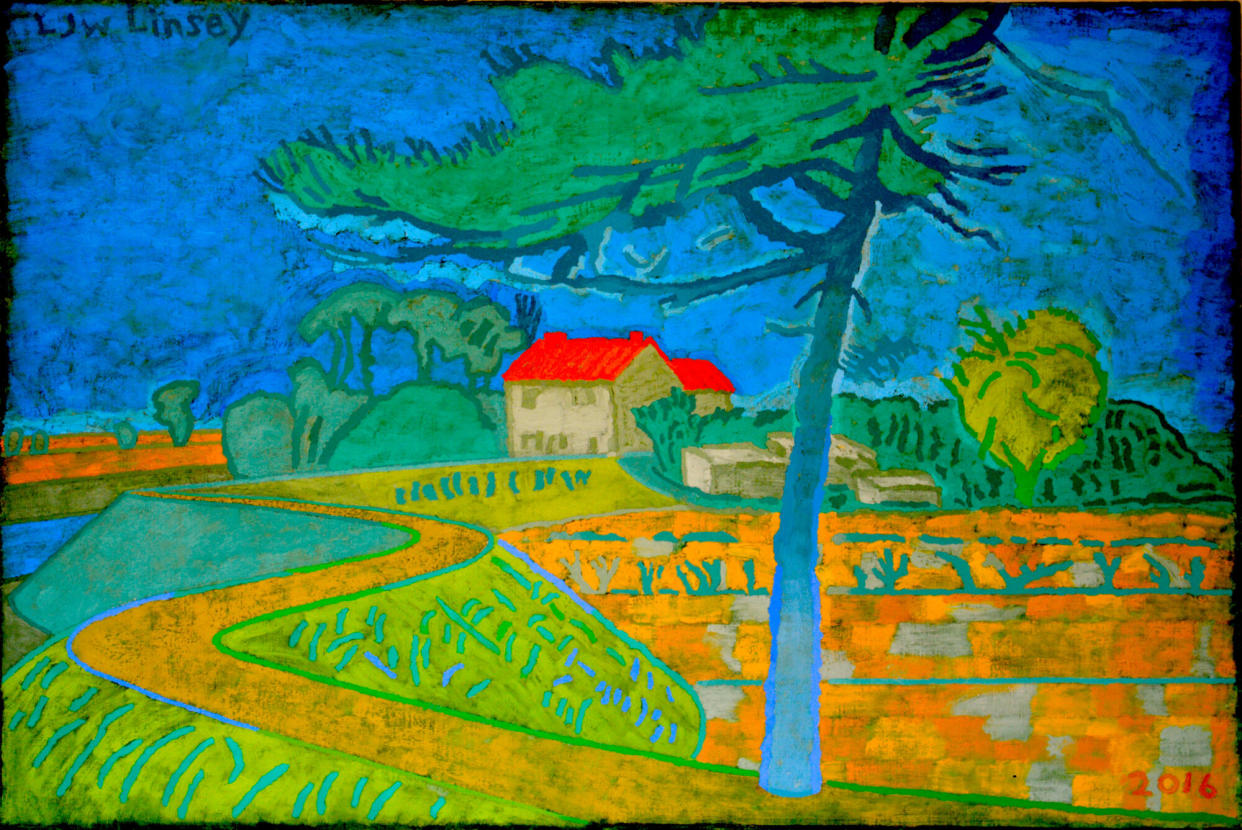John Wormell obituary

My father, John Wormell (latterly John Linsey), who has died aged 97, was a painter who worked for many years as a senior lecturer in fine art at Hornsey College of Art in north London. He retired from the college at 56 to devote the rest of his life to his own work, producing a series of highly individualistic paintings that recalled the landscapes of his youth as he had recorded them in his sketchbooks from the early 1950s.
Inclined to shun the limelight, he was perhaps out of sympathy with the contemporary art world. He chose not to show his later work, concentrating solely on the business of painting pictures. These were always highly considered and no less passionate or deeply felt for the time he took in making them.
Born in Gainsborough, Lincolnshire, John was the eldest of the three sons of Ernest, a tractor engineer, and Marjorie (nee Linsey), a milliner. After attending Queen Elizabeth’s high school in Gainsborough he studied at the schools of art in Lincoln and then Camberwell before going on to the Royal College of Art, where he was awarded the painting prize at the final year show.
Though he was inspired by the teaching of Edward Ardizzone, Edward Bawden, John Minton and John Nash, it was an exhibition of the works of Picasso and Matisse at the V&A in the late 40s that had profoundly affected his view of what painting was and could be.
His first teaching job was at Leicester Art School before he went on to Hornsey College of Art, where he worked across the 60s, 70s and 80s, eventually becoming head of painting. The pressures of teaching, however, as well as helping to raise nine children, caused his own work to stall somewhat, and it was not until he retired to the borders of Scotland in the late 80s that inspiration was rekindled to marvellous effect.
He suffered no loss of his powers with advancing age and only stopped working when the physical act of putting brush to canvas became too painful due to severe curvature of the spine. His last paintings, made just three years before his death, were as vibrant and masterful as anything he had done over the previous 40.
His wife, Teresa (nee Penfold), whom he married in 1953, died in April; my father followed her six weeks later.
He is survived by six sons and three daughters, 15 grandchildren and 11 great-grandchildren.


